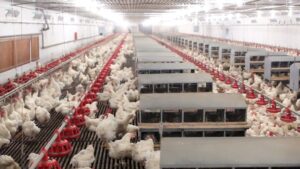Definition
Thank you for reading. Don't forget to subscribe & share!
The feed adulteration is defined as an advertent, deliberate and illegal alteration of a pure feed raw material by adding any other ingredient and its sale by declaring it as a pure feedstuff.
Some feed Feed Adulterants
FEED INGREDIENTS
- Maize
- Rice kani
- Molasses
- Soybean Mineral mixture
- De-oiled rice bran, wheat bran
- Groundnut cake
- Soybean meal Mineral mixture
- Mustard cake
- Argimona maxicana seeds, fibrous feed
- Fish meal
ADULTERANTS
- Cobs, cob dust, sand
- Marble, grit
- Water
- Urea, raw soybean, hulls
- Ground rice husk, saw dust
- Groundnut husk, urea, non-edible oil cakes
- Common salt, marble powder, sand, limestone
- ingredients, urea
- Common salt, urea, sand
EXAMPLES OF ADULTERATION
- Almost all type of feed raw materials can be adulterated and contaminant may be environmental or due to managerial. The environmental contaminants are
- Light particles such as rice bran, from a nearby plant may be carried by the wind to adulterate feedstuffs. This type of contamination is usually very mild and may be neglected for all practical purposes except.
- Hay may be contaminated with weeds or unwanted species of other crops (grasses legumes).
- Grains/seeds often are adulterated with weed seeds. This type of adulteration may vary
- from negligible (most cases) to quite serious. Injurious weed seeds have been observed in some samples. Examples of weed seeds pomoea (morning glory)
- Sesbanio, Bidens. Vigna, Brachiaria, Po/ygonum. Cassia, Commelina, and Cleome. as well as various grass seeds
The contaminations due to management or poor practices include:
- Sand found in samples
- Plastic particles
- Glass powder, found in one finely ground grain sample
- Synthetic fibers present in most sample
- Poor processing fish meal may sometimes be over processed. Although the adulteration of fish-meal seems to occur more often than over processing.
- Microbial contamination, from bacteria and viruses to molds and mycotoxins, access poultry feed and feed ingredients through a variety of routes. Some routes are naturally occurring, while others are caused by exposure during the manufacturing process.
- Microbes as Contaminants
- Invisible to the naked eye, microbes are uniquely able to contaminate living hosts as well as inanimate objects and have proven effective at evading detection. As part of a wider drive for biosecurity, producers and suppliers screen feed and feed ingredients for certain bacteria, such as Enterobacteriaceae and mycotoxins.
- Toxins as Contaminants
- Contaminants can also include naturally occurring components of certain feed and feed ingredients like glucosinolates and toxins produced by microorganisms.
- Molds can grow on grains, seeds and complete animal feed and growth is influenced by environmental factors, like temperature, humidity and rainfall. This can occur during the growing season, harvest and/or storage.
- It is commonly assumed that grain exposed to the elements for a few days is not a big deal, but contamination can happen very quickly and can result in animal health problems and losses of productivity.









